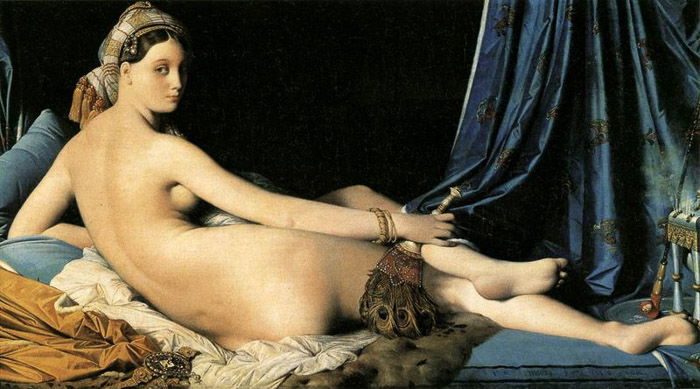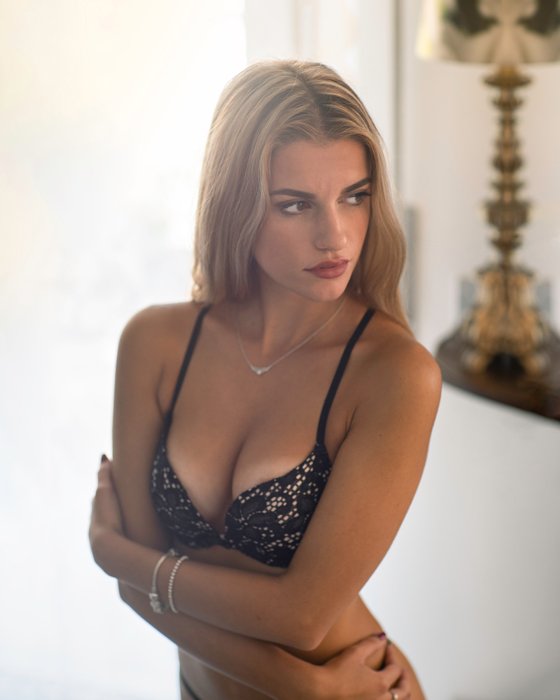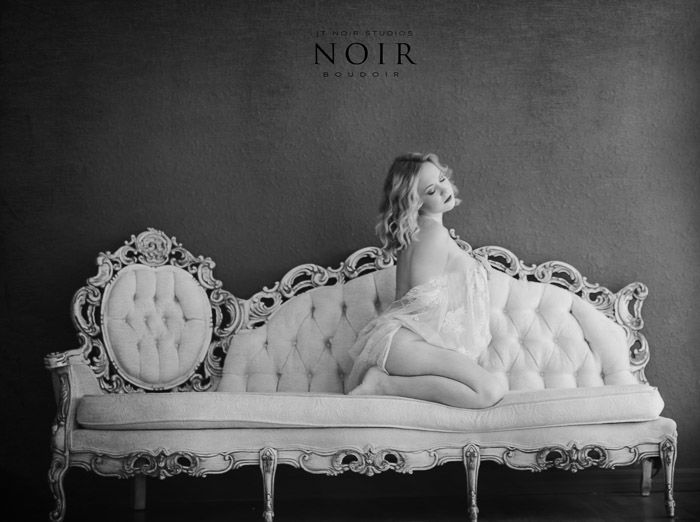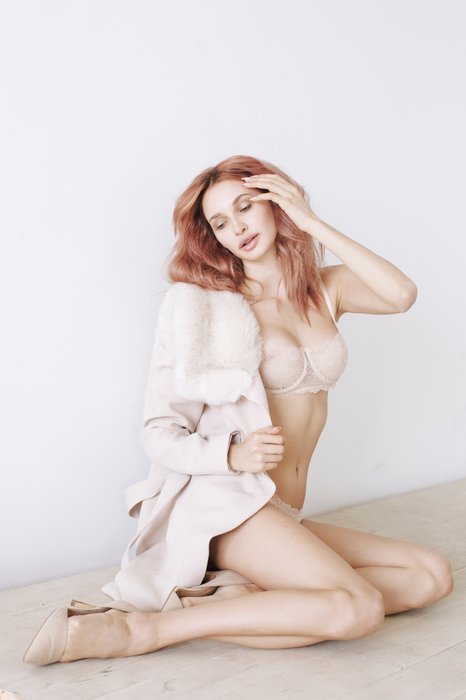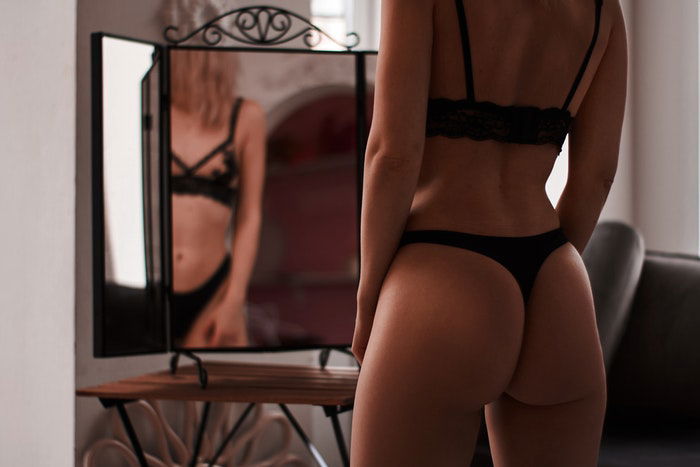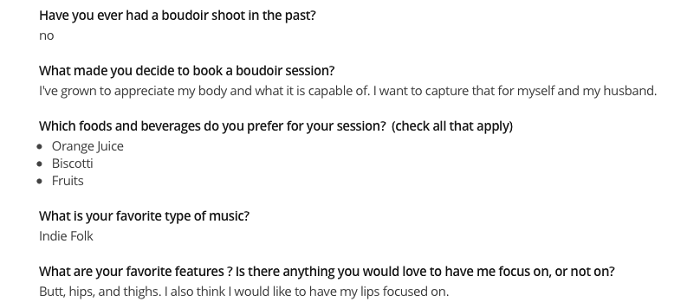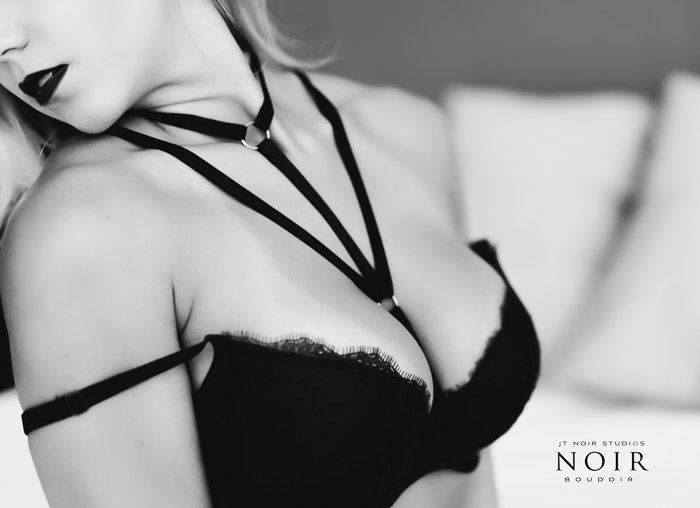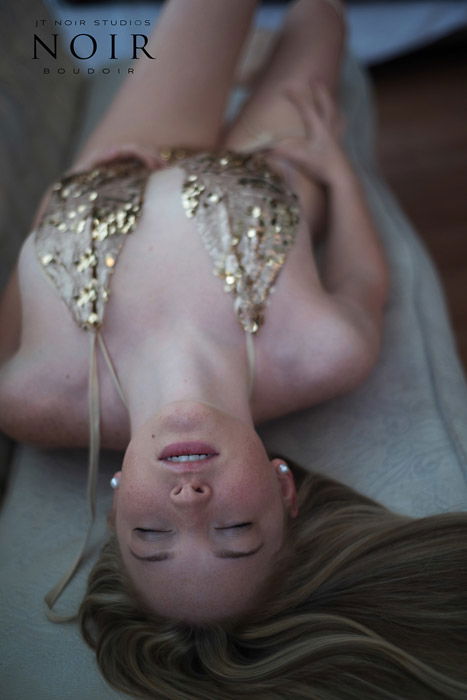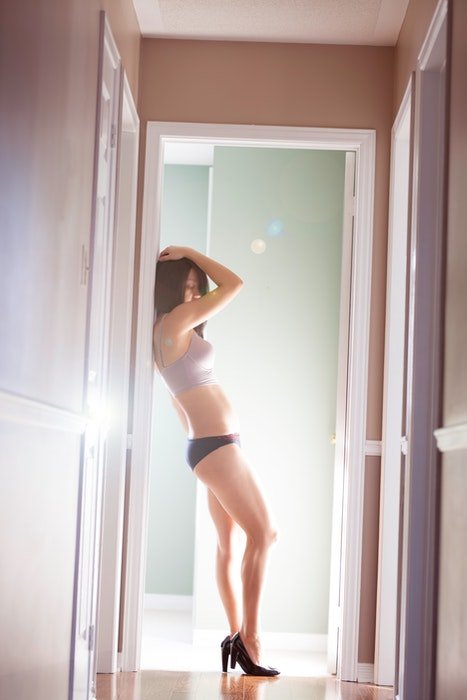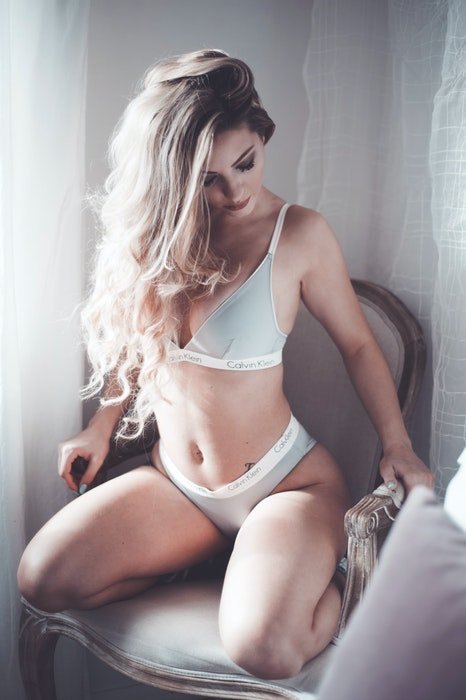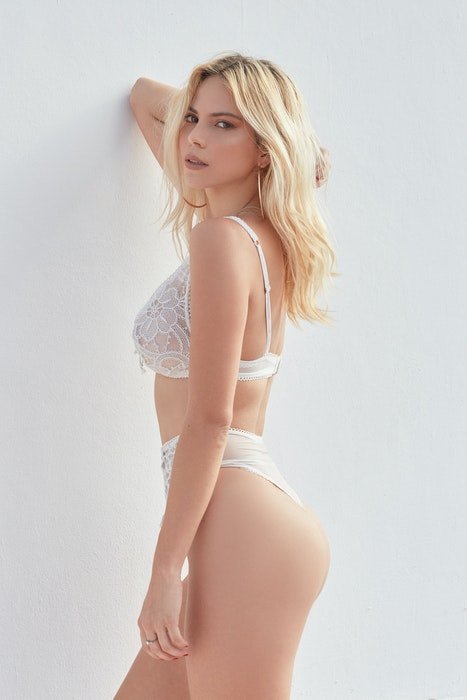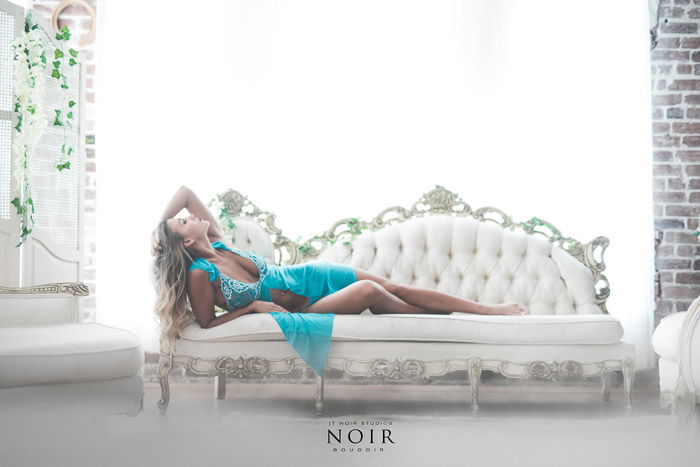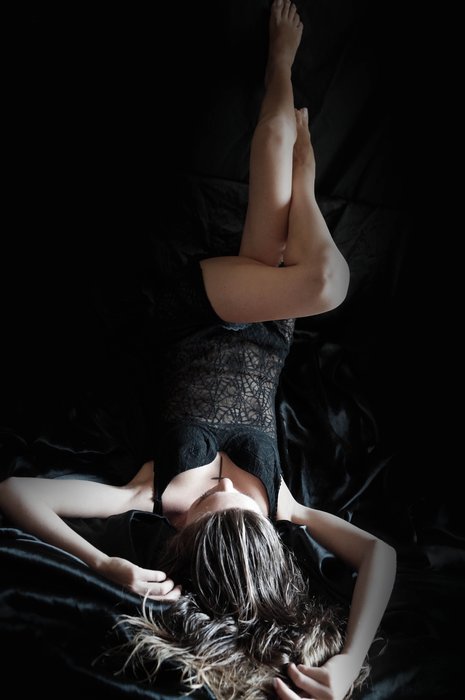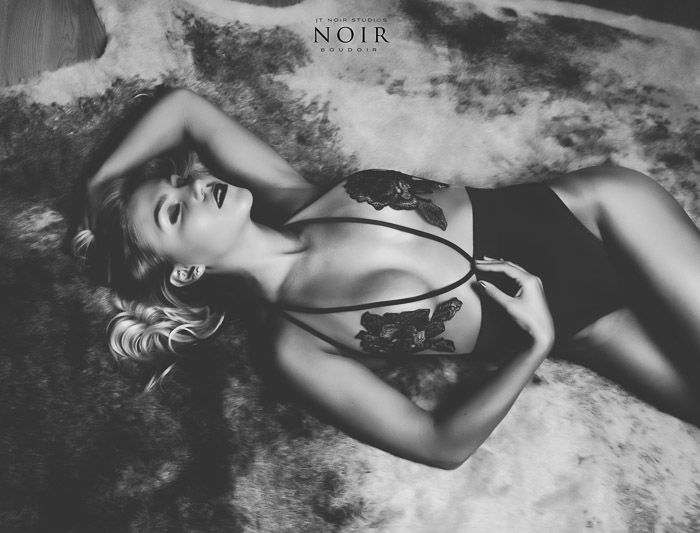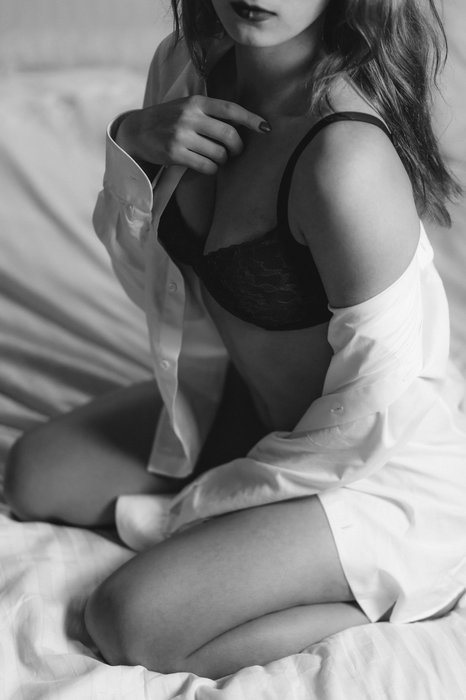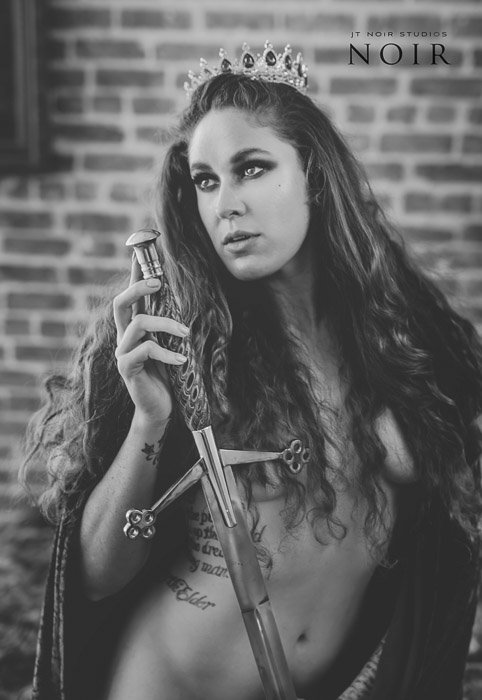Many people consider boudoir photography a great wedding gift for their significant other. There are a few factors to consider when getting started with boudoir photography. [ExpertPhotography is supported by readers. Product links on ExpertPhotography are referral links. If you use one of these and buy something, we make a little bit of money. Need more info? See how it all works here.]
What is Boudoir Photography? The History of Boudoir
Painters have been capturing the female form for centuries. One of my favorite paintings is from Jean Auguste Dominique Ingres. “The Odalisque” was created in 1814. It shows the very nature of what boudoir photography has come to mean. It captures the strength in her physical form. And also the empowerment she creates with her emotional glance over her shoulder. In general, these paintings were done in ornate backgrounds focusing on implied nudes. Boudoir might have changed how it is presented. But it still maintains the same roots. Artists understand that emotion is more important than expression. The expression is in the physical attributes of the client’s face. But the emotional side of boudoir is more important. It is in how the viewer interprets these expressions. Posing a woman or man in a boudoir setting can become quite static. The emotional side has to be present.
What is Boudoir Photography? Boudoir Over the Years
A French artist in the 1920s, Albert Arthur Allen, merged the boudoir industry with photography by creating masterpieces of nude women. This type of photography at the time was illegal. Moving through the decades, pinup photography became the focus until the mid-70s. This was when boudoir photography took its place in major magazines. Photographs were replacing drawings in these publications. Many started to consider boudoir photos as artistic pieces. But there were still many who thought boudoir photos were too pornographic. Fast forward to today, where boudoir photos are highly accepted among women and men. People like it for its artistic representation and not for the sexual ideas behind it. Many clients come in with the idea that it is a gift for a fiancé or anniversary. But when they leave, the gift becomes secondary. Clients gain new confidence thanks to accepting their bodies. Boudoir shoots are an excellent booster for self-esteem. In general, boudoir photography has focused on the female body. But in recent years, male and couples boudoir sessions are becoming popular too.
Is Boudoir All About Sexuality?
Boudoir photography is not all about sexuality. In a world full of selfies, boudoir photography is about true sensuality. Getting into boudoir as a photographer means you want to help people accept their bodies. You also help them value themselves. After any boudoir experience, the client sees themselves differently right from the moment they leave. That’s even before they see the final images.
How to Start With Boudoir Photography
In the beginning, boudoir was only focused on the location. Now it is moving toward the emotion it shares. Setting the scene can be as easy as a bed or as elaborate as a romantic castle on the shores of Ireland.
1. Spend Time With Your Clients to Get to Know Their Preferences
Spend time setting the mood rather than the location. Your client needs to be the primary focus. Understand that this is very intimidating for many clients. Most have never been in this setting before. Boudoir photographers have to understand their expectations and hesitations. You cannot jump into the sessions, assuming your client is as comfortable as you are. I often send out questionnaires about their session. This way, I can better understand their preferences.
2. Keep the First Sessions Simple to Make the Scene Comfortable
Your best bet will be to keep it simple. Do not overdo the background, lighting setups, and posing shot list for the first time. Stick to simple window shots at first if you are a natural light boudoir photographer. Do not introduce strobes to your first boudoir session. They will make your client uneasy when you are unfamiliar with your lighting. Even if strobes are your strong point, keep it simple. Many boudoir clients prefer the softer, non-fashion feel of boudoir photos.
3. Ask Friends to Pose for You to Gain Boudoir Photography Experience
Do you want to experiment with new looks, wardrobe, or scenes? Then put out a model call. This way, you can work out any kinks before having a paying client in the studio. No client wants to pay for you to be figuring out your space. Hire a model for the first session if you prefer the fashion looks. This helps to attract the right clientele for your company. If you are new to paid photography in general, this is a good starting part for any genre. Always use models or friends before charging. You might understand your camera and composition. But it does not mean you should jump into charging without a solid portfolio.
4. Visit the Location to Find Out What Equipment You Need
If you can, try to visit the location ahead of time. It’s useful to see what equipment you will need and if it would fit the space. If you do not have a studio, many Airbnbs will allow this type of photography if you are upfront from the start. Clients’ homes were also very helpful when I was only in the beginning stages of my boudoir photoshoots. Clients often prefer their home to make their photo session more intimate and personal.
5. Get Familiar With Boudoir Lighting, Gear, and Editing
We cannot emphasize enough the importance of using natural light or soft light for boudoir photos. These make the skin smoother and hide the blemishes. If you don’t have enough available natural light, you can use a strobe with a softbox on it. Get familiar with the most flattering camera angles too. If you shoot from a higher level, with your camera above your subject, you make your model look innocent and submissive. Shooting from a level that is lower than your subject will make your model look dominant and powerful. Both angles can work well, depending on the effect you want to achieve. Get to know the different lenses suitable for boudoir photography as well. Use 50mm or 85mm lenses for a casual crop. For a more spacious scene, you can use a 35mm lens. It is wise to use fixed lenses on a wider aperture to smooth the background and bring some bokeh to the shot. This will also help you set the mood. When editing your boudoir photos, it is great to use black and white and tones to enhance your images. Also, smoothen the skin but do not overdo it. You can bring down Clarity and Dehaze for the soft look too.
6. Provide Emotional Support to Gain Your Clients’ Trust
How do I get clients in the door? This is the question I receive the most from newbie boudoir photographers. Getting boudoir clients is not unlike other photography genres. But you should remember that your clients are leaving their comfort zone. So you will be a part of the emotional support for them. Many clients will come to you to gain more confidence or document their journey, such as weight loss. Or even to regain that feeling of being empowered. If you are not sympathetic to these issues, you will lose out on referrals from them. The clients coming to you may be very modest. But they want to break free from these ideas. Being understanding will get you better marketing than anything else. Many boudoir photographers get their new clients because of past ones. Creating a model call can be a great way to start your portfolio and get others talking about your boudoir. I will do a model call at least once a year, even after the decade I have been shooting boudoir. I do these calls to work on a new setup, show off all the new lingerie I have in the studio, or even for model releases.
7. Create a Facebook Group to Share Client Experiences
One of the best decisions I made was to create my VIP forum group for past, current, and future clients through Facebook. I only allow those interested in a session and referred by clients in the group. This helps the group to grow by word of mouth. And it keeps it a safe place for them to ask questions from fellow clients. I add lingerie sales posts and new upcoming events. I do anything that will keep the conversation flowing within the group.
At least once a month, I will do a video showing off the new items, such as albums, wall art, or fun client gifts. These videos get the most responses and keep the group engaged. Being real in your groups is a great way to connect with potential clients. They will already understand a bit about you and feel like they know you prior to a consult. This also allows them to see inside your shooting space, becoming more comfortable already. If you do not have a studio, a simple video from behind-the-scenes prepping for a shoot will work just as well. Clients can talk about their experiences in the group. They can help to reassure anyone else about their hesitations on doing a session. Often clients will sign a release for this group only, knowing its purpose is to encourage others to do a session.
8. Treat Your Clients the Right Way
A boudoir shoot should be fun and exciting for you and your client. A room filled with tension will only create the same effect in the image. I love to go above and beyond for my clients. A boudoir photography session is a time to pamper your guests… whether it is a corporate working mom, a single dad of three, or a couple who truly wants to reconnect, pamper your clients. My questionnaires ask about their preferred music, snacks, and drinks. Clients love the idea of being in the makeup chair, eating strawberries, and sipping on a mimosa before their big session. In a world of chaos, this is the one time they get to truly unwind. The little things, such as their favorite music playing when they arrive, will already have them relaxed. It will also set the mood, especially if they’re coming in from a hectic week. Good boudoir photographers are not only taking photos but also providing an experience of a lifetime.
What Does a Boudoir Shoot Consist Of?
This is up to your type of style. If you are a dark and moody shooter, most of your images should reflect this look. Do you prefer images that are bright and airy? The majority of your boudoir photos should be geared towards this. This is not to say to steer away from one or the other. Your clients will expect certain styles of images if they check your portfolio. If you upload a certain style, but your results will be different, your client will be unhappy and confused. If you like to mix styles, ensure you show that on your site. From start to finish, I tend to show all sides of the client. That is emotionally rather than physically. We work from soft and feminine moods into more empowered, bold looks. Towards the end, we capture the implied nudes if she feels up for it. I prefer to have an idea of the posing I will be taking her through. But if the lighting catches her just right, I have no problem stopping my flow to catch a new look. If you are a potential client or a photographer who has been looking into a boudoir session, communicate your choices. Do not be afraid to let your potential photographer know why you are there. The connection between photographer and client needs to be genuine. This is the only way to let emotions shine through the images. I tell my clients to bring certain items with them. But I also tell them to feel free and bring extra. I may see something that sparks my creative eye. I have had many clients bring in suitcases full of looks.
Conclusion
We hope we answered the question, “What is boudoir photography?” Boudoir photography can be a life-changing experience for the client and the photographer. Watching my clients walk out the door more confident than when they walked in is the most rewarding part of my job. We have a great post on boudoir photography business tips to check out next! For all the best tips on becoming a successful portrait photographer, read our e-book, Profit from Portraits!


